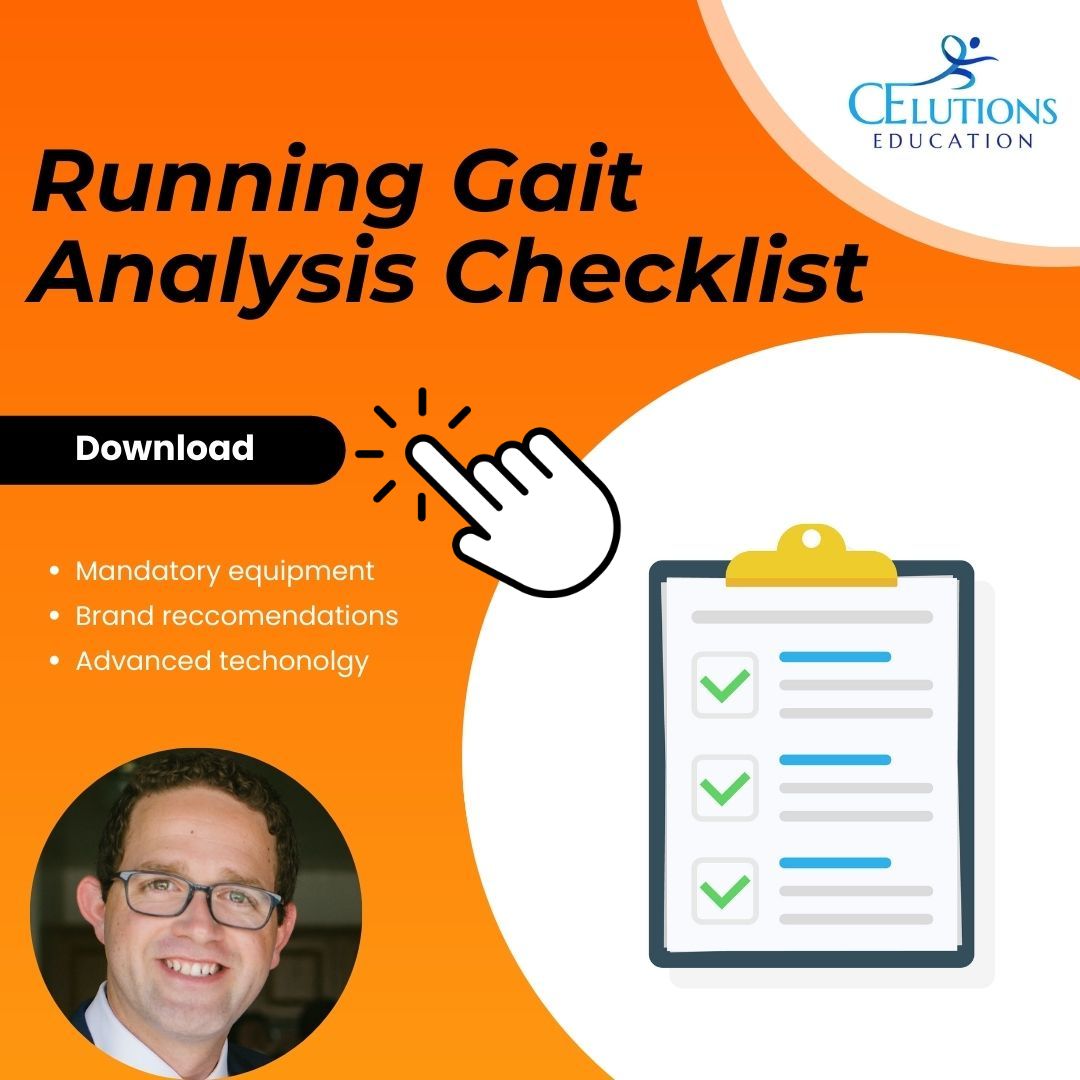3 Ways To Change Running Gait (That Actually Work!)
Apr 06, 2023
3 Ways To Change Running Gait (That Actually Work)
There are so many ways to change running form but some are better than others. Recommendations can be as informal as a running partner suggesting that you “land on your toes while you run” to a running specialist performing a running gait analysis and providing evidence based techniques to change your running form. As PTs it is essential for our advice to be formed with objective findings, evidence and research. The problem is it’s hard to wade through the research articles and latest techniques on how to change runners’ form. Therefore, we unfortunately see many practitioners utilizing outdated or incorrect gait retraining methods. To help streamline the information, here’s three evidence based techniques that can change runners’ gait.
How To Change Running Gait
Before we change a runner’s form we first need to consider the impacts those changes may have on the runner’s physical health. Running gait adjustments for each individual runner may significantly impact their risk to injury based on factors such as anatomical make up, training mileage, upcoming race schedule and footwear to name a few. For example, it’s important to use caution when changing a runner’s form or footwear within 30 days of a race and/or if they are participating in high mileage training. Additionally, I always account for a transition period for the runner to change his or her form. I personally advise my runners to utilize a new running form for only 0.25 miles during their first run and slowly transition them to exclusively using their new running form over several weeks or months depending on the complexity of the adjustments. While we will focus on three ways to change running gait that can immediately impact and change a runner’s form there are a multitude of other methods to retrain running gait such as corrective exercises, footwear, neuromuscular reeducation and manual therapy.
Watch on YouTube:
The Three Ways To Change Running Gait
Cadence:
180 steps per minute has been incorrectly used as the perfect running cadence by many runners. While 180 steps per minute may be good for some patients, many benefit from a faster or slower cadence. For example, runner’s with a 180 spm cadence who present with an overstriding gait deviation are recommended to slow their cadence while running. This is because runners presenting with overstriding sustain significantly higher impact levels in the lower extremities at initial contact and research supports utilizing a slower running cadence to limit overstriding and decrease the high ground reaction forces (impact) while running. One way to help runners do this is to recommend they listen to music at a specific cadence or reference a metronome while running.
Step Width:
Runners will often present with a gait deviation that looks like their feet are landing very close to each other while running. To help illustrate this, think of running on a tightrope as an extreme example. The problem with running with a minimal step width is that it creates hip adduction at initial contact, which when coupled with the impact of your body weight it often causes overpronation, excessive genu valgum, and hip drop. To Improve this practitioners will provide the running cue “run as if your feet are landing on either side of a thin white line”. That enables the runner to reduce hip adduction, mitigates the detrimental biomechanics and lowers the risk to injury.
Footstrike:
As referenced in the previous article The Truth About Forefoot And Rearfoot Running both forefoot and rearfoot running carry risks to injury for runners. However, runners with excessive heel strike and dorsiflexion at initial contact also sustain higher impact through the lower extremities while running. These increased ground reaction forces can be reduced by providing these runners with a verbal cue to “run quiet”. This causes the runner to increase plantarflexion (reducing the excessive dorsiflexion) and lessen their heel strike gait pattern, in turn reducing the impact on their lower extremities. Similar running cues such as “run as if you are running on eggshells” and “run lightly” are also commonly used.
How To Integrate Gait Retraining To A Plan Of Care
Running cues can make a significant impact on runners’ biomechanics resulting in fewer injuries or at times avoiding injury altogether. However, it’s important to use evidence based clinical reasoning to pair the right gait retraining technique to the right patient. For example, if you have a patient that already has a slow cadence and you slow it down even more there is a chance that runner will become injured. Conversely, I have personally seen numerous examples of the right gait retraining technique resolve a patient’s injury. For example, I saw a patient with IT Band syndrome who presented with a narrow step width, once we widened their step width their pain 100% resolved. Lastly, when formulating a plan of care to adjust running form make sure to not only utilize evidence based gait retraining but advise the patient on footwear, corrective exercises, follow up PT visits and reassessments if applicable.
How To Learn More Ways To Change Runner’s Form
These 3 running gait retraining techniques are just a few of the many different techniques you can utilize to help runners improve their form. If you are interested in learning more about providing a running gait analysis and starting your own running gait analysis clinic check out our continuing education course “The Essentials of Running Gait Analysis”. In the course you will learn a multitude of running gait retraining strategies to implement on your next running gait analysis. Lastly, if you have questions about this content or the course feel free to reach out to us to discuss and we will personally respond to your questions.
Listen to the podcast!
If you haven’t done so already grab the “24 Hour Gait Analysis Checklist” and start your own running gait analysis clinic.
References:
https://www.ncbi.nlm.nih.gov/pmc/articles/PMC7183043/
https://journals.humankinetics.com/view/journals/ijatt/24/1/article-p9.xml
https://www.ncbi.nlm.nih.gov/pmc/articles/PMC6829001/


